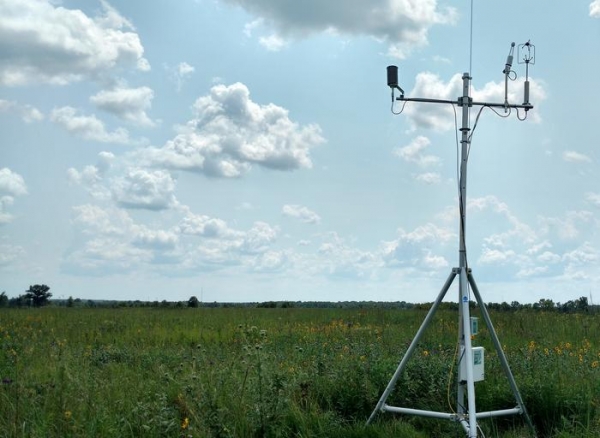One of the main reasons plants use water is to allow them to absorb carbon dioxide from the atmosphere. This means that, in plants, the water and carbon cycles are tightly linked. In a new study, researchers from the University of Missouri and the United States Department of Agriculture (USDA) used this foundational principle to identify sustainable farming practices aimed at helping staple crops like corn and soybeans thrive during extreme weather conditions that have become more common in the Midwest.
This study examined how farming practices affect crop resilience to climate change by examining water and carbon fluxes in three contrasting ecosystems: A business-as-usual tilled cropping system, an aspirational no-till cropping system with cover crops, and a native tallgrass prairie ecosystem.
“One of the big goals is what we call climate-smart agriculture, which can mean using crops to absorb carbon out of the air, but it also means trying to adopt farming practices that help farms adapt to the changing climate,” USDA research hydrologist Adam Schreiner-McGraw said. “As it gets hotter, plants get more stressed, and that means they often have lower yields. This research is focused on understanding adaptation and how to work toward more resilient agro-ecosystems.”
Read more at: University of Missouri
An eddy covariance tower, a tool which measures the breathing capacity of an ecosystem, sits in Tucker Prairie, Missouri's largest remaining virgin tall-grass prairie. (Photo Credit: Jeffery Wood)


